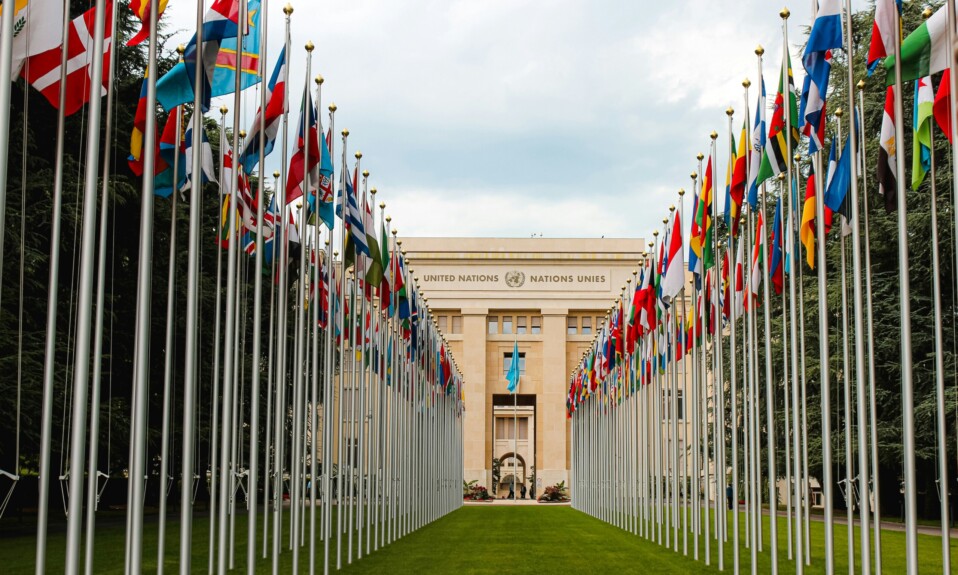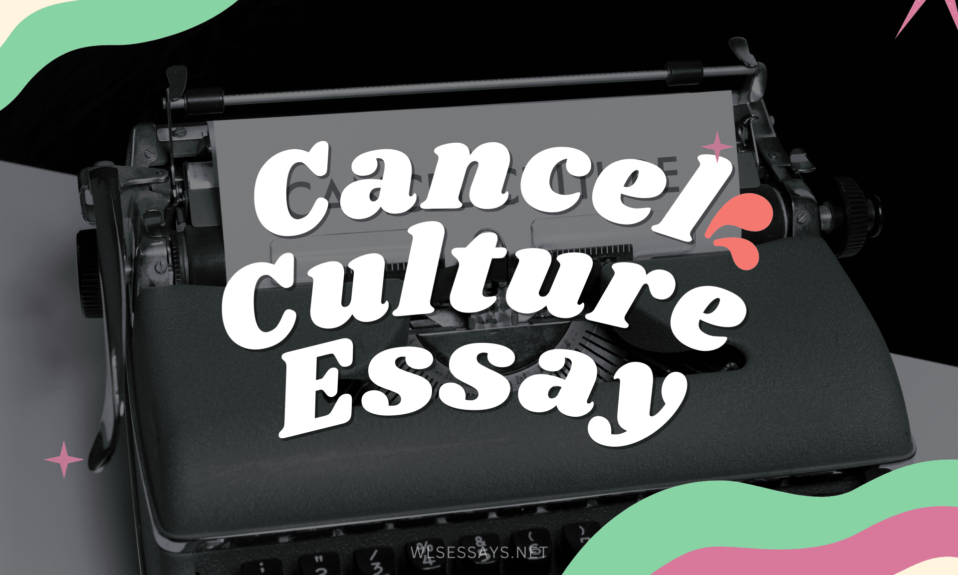Student’s Name
Department, University
Course Code: Course Title
Instructor’s Name
Due Date
Table of Contents
Organizational Behavior Theories 4
Theory Application to Solve Starbucks Workers’ Problem 5
Application of Organizational Behaviour Theories to Solve Starbucks Worker Problem
Introduction
Employees’ collective behaviours in an organization can help managers understand them, solve many work-related problems and enhance individual, group and overall performance. Organizational behaviour (OB) refers to employees’ conduct when actively engaging in the organizational process but not directly supported by the official reward system. OB aims to uncover practices concerning how workers behave while working for an organization and the effect on the firm’s operations and bottom line. Consequently, managers have many duties and responsibilities regarding OB to improve business performance, including making decisions, allocating resources, motivating staff, reducing absenteeism and increasing productivity and performance. Therefore, the objective of the present study is to apply OB theories (attribution and Herzberg’s two-factor) in solving a real-world business problem (Starbucks’s conflict with Worker Union and decreasing sales revenues), to demonstrate the importance of planning in problem-solving.
Problem Statement
Starbucks is a United States multinational company specializing in producing, brewing and selling speciality coffee, other hot and soft drinks and snacks. The company has a global presence of 35,000 stores in more than 80 countries, including 57 retail outlets in Switzerland (Starbucks, 2024). Although ownership styles of the individual retail stores differ, some are company-operated while a majority are through a license; activities occurring in the home country could affect affiliated businesses in foreign countries. For instance, the recent row between Starbucks Management and Workers’ Unions over the latter’s support for Palestine has led to widespread boycotts of the organizational products in local and foreign markets, diminishing global sales revenues and profits and ultimately hurting its reputation (Sherman, 2023). However, the problem of public image reflects internal issues, where employees perceive the organization is not compensating them commensurate with their efforts and current market rates. According to Bai (2023), labour unions fight for employee rights and remuneration, and consequently, they often conflict with management that desires to minimize operational costs. The legal disagreement between Starbucks Management and Workers Union is not about the Israel-Palestinian war but the corporate practice of under-compensating its employees. Thus, many external organizational problems have an internal root cause, which the application of OB could help understand and resolve.
Organizational Behavior Theories
Attribution and Herzberg’s Two-factor theories are organizational behaviour models useful for explaining Starbucks’ problem with employee remuneration and conflict with the worker’s unions. The attribution theory proposes a causal relationship between success and failure and internal (ability or effort) and external (task difficulty or luck) causes. Consequently, the model claims management finds it psychologically favourable when attributing failure to controllable factors like the lack of effort and unfavourable ones to stable and uncontrollable factors like ability (Kumas & Calli, 2024). The theory also attempts to explain how people form explanations of their and others’ behaviours through consensus (the person’s behaviour is similar to that of other people in similar situations), consistency (how often the person’s behaviour deviates from the past) and distinctiveness (how often the individual behaves in the same way across different situations). The attribution theory is relevant to the Starbucks case of loss of reputation and staff perception of compensation because their collective behaviours can be explained through consensus of thoughts (Safira et al., 2023). Their dissatisfaction with management could be due to the perception of a mismatch between compensation and their contribution to the success of the coffee chain. Therefore, the attribution theory explains staff-to-management problems resulting from perceptions of a flawed incentive system.
Herzberg’s two-factor theory claims Starbucks Switzerland’s problems with workers’ unions and decreased sales have an internal cause associated with the lack of motivation and hygiene factors. Frederick Herzberg conceptualized the theory proposing that employee satisfaction has two dimensions: hygiene factors such as salary and supervision that could lead to dissatisfaction with work, and motivation aspects like recognition and achievement that inspire employee productivity, creativity and commitment to the organization (Peramatzis & Galanakis, 2022). Based on the theory, Starbucks’s external issues with workers’ unions have an internal link: employee dissatisfaction with management. However, the model argues that organizations can emphasize motivation to compensate for low hygiene features. In contrast, however hard a company focuses on hygiene for workers, they need more motivation (Lee et al., 2022). Consequently, work perceptions of under-compensation transcend the internal organizational environment to Worker unions to fight for better incentives for workers, which would affect the cost of doing business, leading to conflict with management focused on cost minimization and profit maximization for shareholders. Therefore, Herzberg’s two-factor theory explains Starbucks’s loss of reputation due to the need for more financial recognition and a consensus to fight to improve their work conditions.
Theory Application to Solve Starbucks Workers’ Problem
Starbucks’s management can use the attribution and Herzberg’s two-factor theories to improve its public image by resolving internal employee issues by improving incentives, recognition and the work environment. The primary intention of Starbucks should be to weaken the workers’ union and reduce their ability to influence internal decisions through providing continuous training opportunities for workers and assign work that matches their qualifications. According to the attribution theory, workers who perceive the organization as caring for their individual needs through supporting career progression and reduced effort to perform assigned duties reduce the need for unions to fight for their rights (Lee et al., 2022). Based on Herzberg’s factor theory, training and task-matching motivate employees by promoting self-fulfilment and career progression. In addition, improving the incentive system to include financial and non-financial aspects such as annual rewards and recognition, promotions, and family holidays further decreases employees’ need for Worker Union support. Therefore, improving ability, task performance, and compensation can strengthen staff relationships with management but weaken the relationships with worker unions and reduce their ability to interfere with the internal and external business environment.
Starbucks can address conflicts with worker unions by reducing employees’ reliance on them and increasing their job satisfaction and relationship with management. Both attribution and Herzberg’s two-factor theories stress handling employees’ personal and work-related aspects to create a positive perception of the organization. Consequently, Starbucks can implement the following three recommendations to improve workers’ job satisfaction. First, management should organize annual seminars and workshops to train workers and equip employees with communication and customer care skills to help waitpersons improve their performance. Second, review the current compensation and incentive system to align pay with qualification and experience and recognize and award exemplary performance with promotion and family holidays. The aim is to motivate others to work harder to achieve similar success. Thirdly, implement an open-door policy where workers can freely share their grievances and include their representatives in management meetings to share workers’ perceptions and opinions. When worker feel their opinions are valued and included in decisions, they own them and put extra effort to ensure their success. Therefore, the three recommendations aim to create a positive perception of caring management and reduce worker dependence on unions to agitate for their rights because they can directly share them with management.
Conclusion
Starbucks’s conflict with the Worker Union reflects internal employee dissatisfaction with management and the work environment, leading to diminishing sales revenues. Employees perceive the coffee house as not adequately compensating them, compelling them to turn to the union for support. However, Starbucks management can address the issue by weakening union power by reducing employees’ needs for them. They can introduce continuous training to update employee skills, match their abilities to assigned responsibilities and roles, implement transparent and open communication channels for workers to share their opinions and grievances, and include them in decision-making. Employees who perceive an organization cares for their professional and personal needs will have little incentive to join a union or depend on them to protect their rights. Therefore, Starbucks’s case reveals that many external business problems have an internal cause, and management should identify and address them to improve overall performance and productivity.
References
Bai, J. (2023). The Starbucks Crisis: External and Endogenous Pressures of Coffee Market Giants. Frontiers in Business, Economics and Management, 8(1), 272-275. https://doi.org/10.54097/fbem.v8i1.6228
Kumas, G., & Calli, D. S. (2024). Determinants of organizational stress: A research the framework of attribution theory. Journal of Tourism Leisure and Hospitality, 6(1). https://doi.org/10.48119/toleho.1291862
Lee, B., Lee, C., Choi, I., & Kim, J. (2022). Analyzing determinants of job satisfaction based on two-factor theory. Sustainability, 14(19), 12557. https://doi.org/10.3390/su141912557
Peramatzis, G., & Galanakis, M. (2022). Herzberg’s Motivation Theory in Workplace. Psychology, 12(12), 971-978. https://doi.org/10.17265/2159-5542/2022.12.009
Safira, M., Sari, R., Muda, I., & Kesuma, S. A. (2023). The implementation of attribution theory in leadership: a systematical literature review. Brazilian Journal of Development, 9(12), 31872-31885. https://doi.org/10.34117/bjdv9n12-088
Sherman, N. (2023). Starbucks blames ‘misrepresentation’ after Israel Gaza protests. BBC. https://www.bbc.com/news/business-67777506
Starbucks. (2024). About us. https://www.starbucks.com/about-us/
Application of Organizational Behaviour Theories to Solve Starbucks Union Problem. Text from PDF
Presentation Objective
Employees’ collective behaviours assist managers understand them, solve many work-related problems and improve individual and overall organizational performance.
Employee organizational behaviour (OB) is seen through their active engagement in the corporate process but not directly supported by the official reward system.
Managers can use OB to improve business performance to allocate resources, motivate staff, reduce absenteeism and increase productivity and performance.
The objective of the present study is to apply OB theories to solve a real-world business problem and demonstrate the importance of theoretical learning to problem-solving.
Starbucks
Starbucks is an American-based multinational company specializing in producing, brewing and selling speciality coffee.
The firm also sells other hot and soft drinks and snacks. The company has a global presence of 35,000 stores in more than 80 countries. In Switzerland, the coffee retailer has 57 retail outlets (Starbucks, 2024).
Ownership styles of the individual retail stores consist of company-operated and through license.
The firm has been successful until recently, when conflict with Worker Union has led to boycotts in local and foreign markets, diminishing its sales revenues.
Starbucks’ Problem
Starbucks conflict with Workers’ Unions concerns the opposite sides they have taken regarding the Palestinian in the war with Israel.
The union claims Starbucks support Israel military action is unfortunately because they are killing innocent Palestinians.
The result is boycotts of Starbucks products diminishing global sales revenues and profits (Sherman, 2023).
However, the main problem is internal issues with employees at Starbucks.
Employees perceive management is under-compensating them.
They involved the union to fight for better pay, which conflicts with management desire to minimize operational costs.
Organizational Behavior: Attribution Theory
Attribution theory:
Employees’ perception of success and failure depends on their opinion about how their work matches their ability or effort and the level of task difficulty.
Workers may attribute failure to controllable factors (e.g., the lack of effort) and success to stable and uncontrollable factors (e.g., ability) (Kumas & Calli, 2024).
Employees develop work-related perceptions through consensus, consistency and distinctiveness.
Relevance of attribution theory to the Starbucks case.
The link between the loss of reputation and staff perception of in adequate compensation.
Consensus of dissatisfaction with management and turning to worker union to agitate for better pay.
Organizational Behavior: Herzberg’s Two-Factor Theory
Herzberg’s two-factor theory claims Starbucks problems with workers’ unions has an internal cause linked with the lack of motivation and hygiene factors.
The theory proposes that employee satisfaction has two dimensions: hygiene factors such as salary and supervision leading to dissatisfaction with work, and motivation aspects like recognition and achievement inspiring productivity, creativity and commitment to the organization (Peramatzis & Galanakis, 2022).
Starbucks’s external issues with workers’ unions have an internal cause, employee dissatisfaction with management.
To solve the problem, Starbucks should focus on more on motivation factors to compensate for low hygiene features (Lee et al., 2022).
Consequently, worker perceptions of under-compensation compel them to seek Worker unions to fight for better incentives increasing the cost of doing business, leading to conflict with management focused on cost minimization and profit maximization. Therefore, Herzberg’s two-factor theory explains Starbucks’s loss of reputation due to the need for more financial recognition and a consensus to fight to improve their work conditions.
Applying Theory to Solve Starbucks’ Problem
Attribution theory: Workers who perceive the organization as caring for their individual needs through supporting career progression reduce the need for unions to fight for their rights (Lee et al., 2022).
Starbucks strategy: To weaken the workers’ union and reduce its influence on internal decisions by
Offering continuous training opportunities for workers; and
Assign work that matches their abilities.
Herzberg’s factor theory: Training and task-matching motivate employees by promoting self-fulfilment and career progression.
Improving the incentive system to include financial and non-financial aspects such as annual rewards and recognition, promotions, and family holidays further decreases employees’ need for Worker Union support.
Recommendations for Starbucks
Starbucks Management should:
Organize seminars and workshops to train workers and equip employees with relevant skills to help them improve their performance.
Review and align the current compensation and incentive system to qualification and experience and recognize and award exemplary performance with promotion and family holidays.
Implement an open-door policy where workers can freely share their grievances and include their representatives in management meetings to share workers’ perceptions and opinions.
The three recommendations create a positive perception of caring management and reduce worker dependence on unions to agitate for their rights.
References
Bai, J. (2023). The Starbucks Crisis: External and Endogenous Pressures of Coffee Market Giants. Frontiers in Business, Economics and Management, 8(1), 272-275. https://doi.org/10.54097/fbem.v8i1.6228
Kumas, G., & Calli, D. S. (2024). Determinants of organizational stress: A research the framework of attribution theory. Journal of Tourism Leisure and Hospitality, 6(1). https://doi.org/10.48119/toleho.1291862
Lee, B., Lee, C., Choi, I., & Kim, J. (2022). Analyzing determinants of job satisfaction based on two-factor theory. Sustainability, 14(19), 12557. https://doi.org/10.3390/su141912557
Peramatzis, G., & Galanakis, M. (2022). Herzberg’s Motivation Theory in Workplace. Psychology, 12(12), 971-978. https://doi.org/10.17265/2159-5542/2022.12.009
Safira, M., Sari, R., Muda, I., & Kesuma, S. A. (2023). The implementation of attribution theory in leadership: a systematical literature review. Brazilian Journal of Development, 9(12), 31872-31885. https://doi.org/10.34117/bjdv9n12-088
Sherman, N. (2023). Starbucks blames ‘misrepresentation’ after Israel Gaza protests. BBC. https://www.bbc.com/news/business-67777506
Starbucks. (2024). About us. https://www.starbucks.com/about-us/










